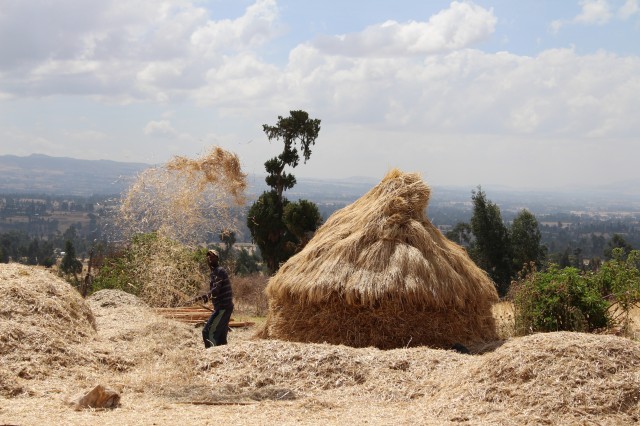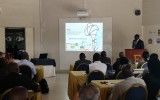
Climate change
Planning to reduce the impact of global climate change on the populations of developing countries requires a method of assessing human vulnerability.
Household economy methods can be used in this context to better understand the nature of vulnerability and to consider ways to limit its effects – for example, the methods can help researchers and policy makers to monitor the impacts on livelihood systems of multiple stress factors (such as increased frequency of flooding, changes in seasonal rainfall patterns or reduced agricultural production), to identify the people that are least able to adapt to change, and to assess the levels of assistance required.
Some of the impacts of climate change can be reduced by flood control and other measures to strengthen infrastructure, developing drought-resistant crops, and providing social protection to help households to overcome falls in income and maintain their resilience. However, identification of the specific vulnerabilities (linked not only to specific at-risk livelihood activities and locations but also to the wider social, political, economic and technological context) of different households and groups may also be needed. Household economy methods can assist with this, by providing reliable data on households’ livelihoods and other characteristics that contribute to defined vulnerabilities as well as generating transparent and convincing output that can drive action.
A number of countries in sub Saharan Africa routinely use the household economy approach (HEA) for regular and effective vulnerability assessments. The HEA is a significant source of data on rural livelihoods: the simplified large-area data has some limitations, but HEA data from many African countries currently forms the only available dataset describing livelihoods for wide areas of the continent. For this to be sustained and extended, further capacity building, improved systems of data management and wider engagement are needed. This data opens up many possibilities:
- to estimate food access and deficits – and related cash deficits – for the distinct groups within a livelihood zone;
- to provide information required for assessing and managing the year-to-year impact of production and price changes on people’s livelihoods, food security and welfare;
- with an expected range of likely production and price conditions, to develop scenarios that can help to identify and understand groups’ vulnerabilities, suggest ways in which their vulnerability might be reduced, and provide a basis for assessing the potential impacts and costs of different policies and interventions;
- as new data becomes available, to monitor actual changing livelihoods and adaptations to climate changes and other developments;
- and to investigate connections between the many variables that impact on livelihood resilience.
The individual household method (IHM®) allows for further disaggregation of household data and can be used for designing, monitoring and measuring the impacts of development programmes at a household level. This more nuanced and comprehensive data can be used in both urban and rural contexts:
- for a detailed picture of households’ assets, income sources, demographics and capabilities to meet their essential food and non-food needs;
- to provide a framework within which other relevant information can be collected from households;
- to develop targeting criteria and select particular households according to these criteria;
- to simulate expected impacts on incomes from likely changes in price and production, as well as other developments (such as potentially reduced transaction costs and increased market access resulting from a new road);
- to estimate consumption of particular crops, livestock products, wild foods or food aid transfers;
- and for many other research applications.
Our latest climate change studies and blogs
-
Insights from an internship with Evidence for Development
Planning to reduce the impact of global climate change on the populations of developing countries requires a method of assessing human vulnerability. Household economy methods can be used in this context to better understand the nature of vulnerability and to consider ways to limit its effects – for example, the methods can help researchers and policy […]
-
Integrating hydro-climate science into policy decisions for climate-resilient infrastructure and livelihoods in East Africa
Planning to reduce the impact of global climate change on the populations of developing countries requires a method of assessing human vulnerability. Household economy methods can be used in this context to better understand the nature of vulnerability and to consider ways to limit its effects – for example, the methods can help researchers and policy […]
-
Imagine all the snows of Mount Kilimanjaro had melted
Planning to reduce the impact of global climate change on the populations of developing countries requires a method of assessing human vulnerability. Household economy methods can be used in this context to better understand the nature of vulnerability and to consider ways to limit its effects – for example, the methods can help researchers and policy […]

